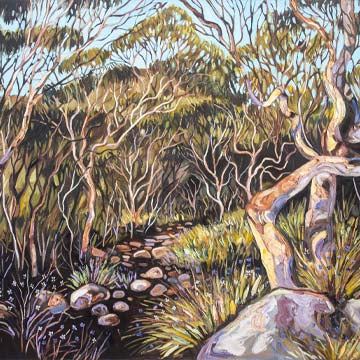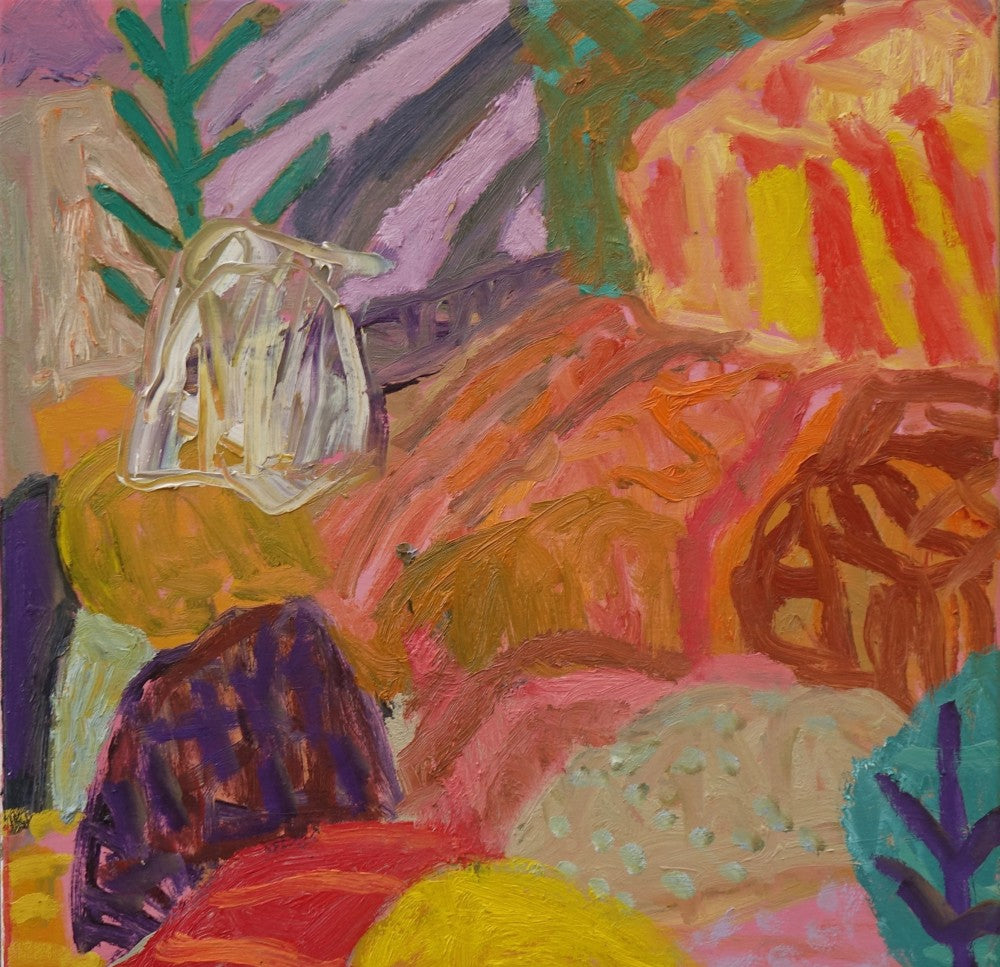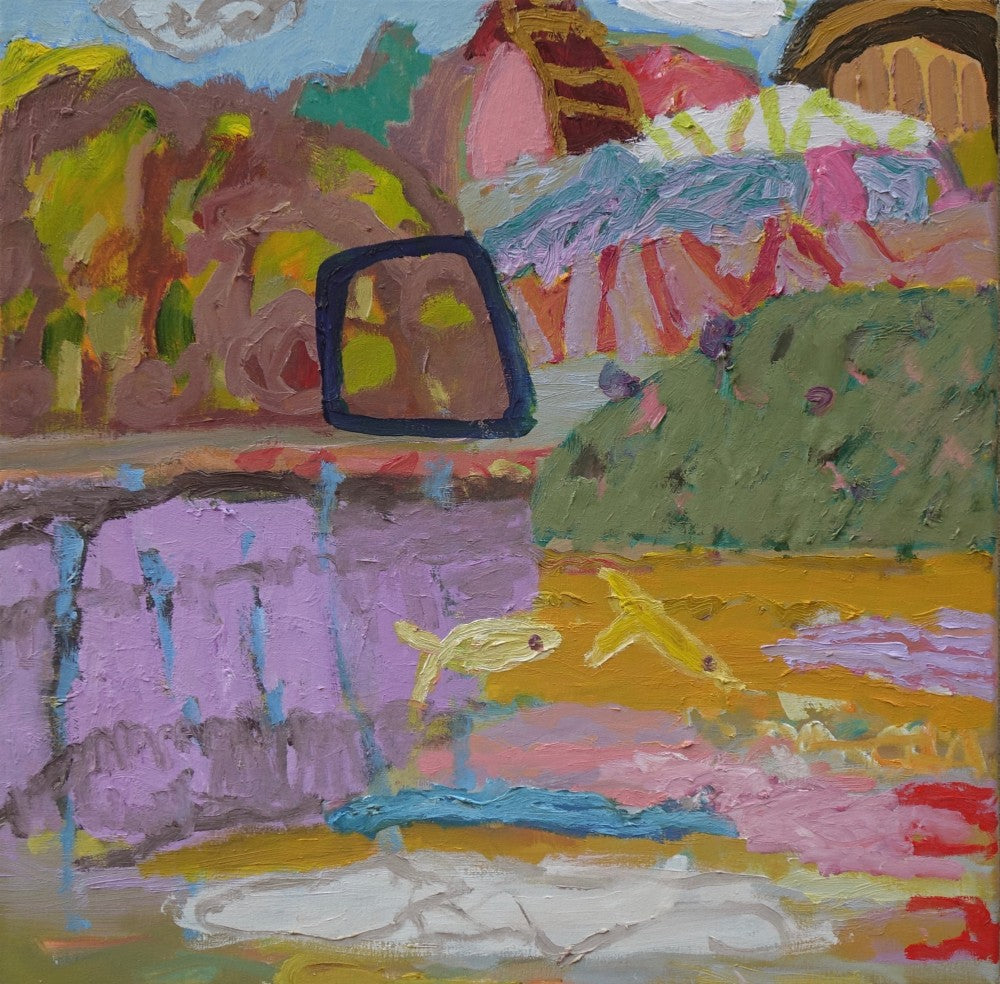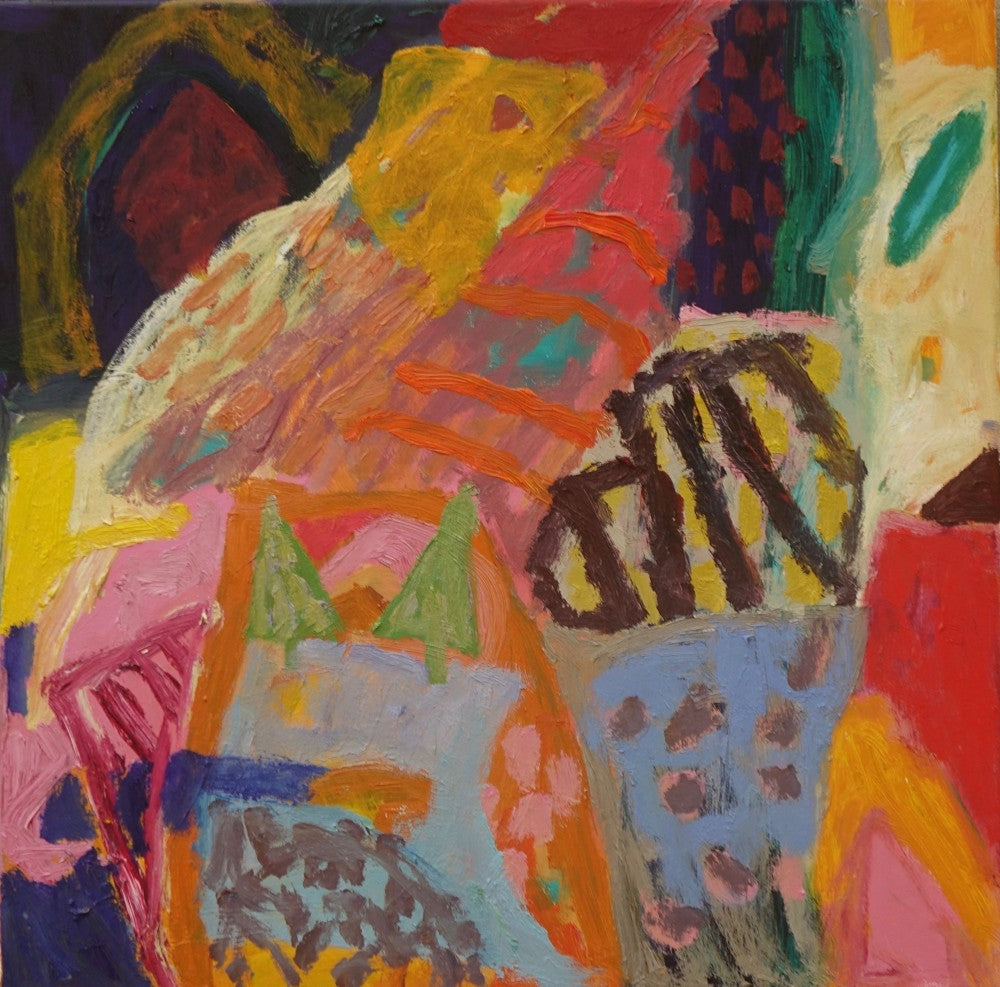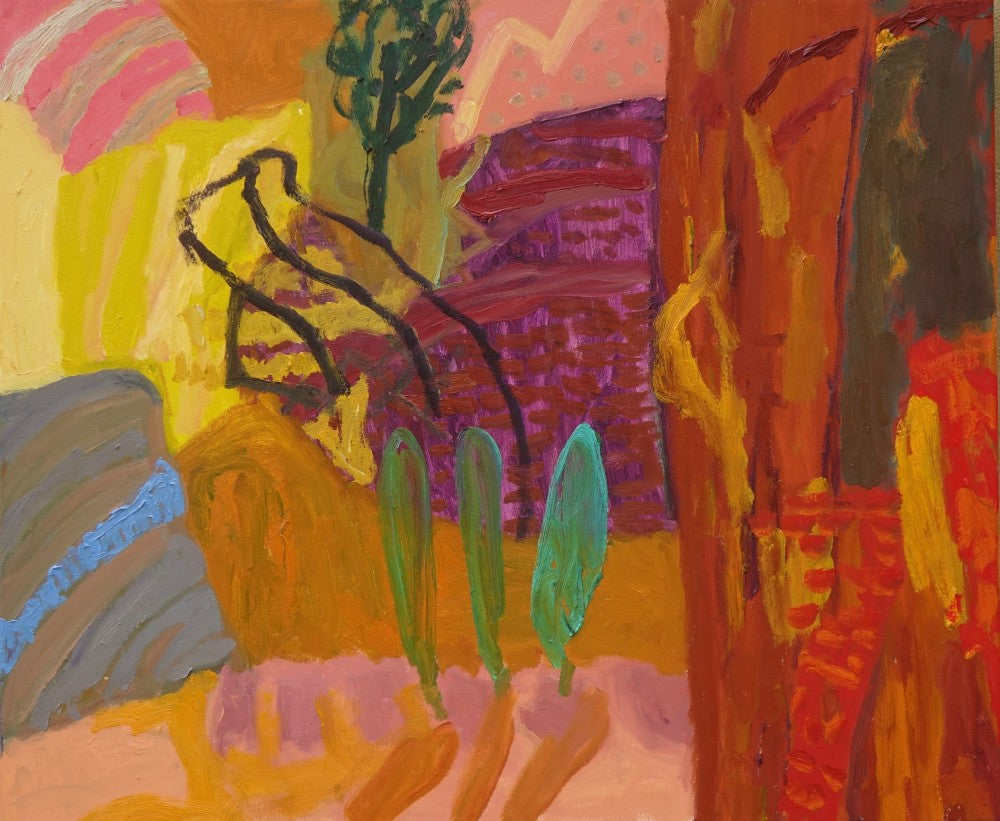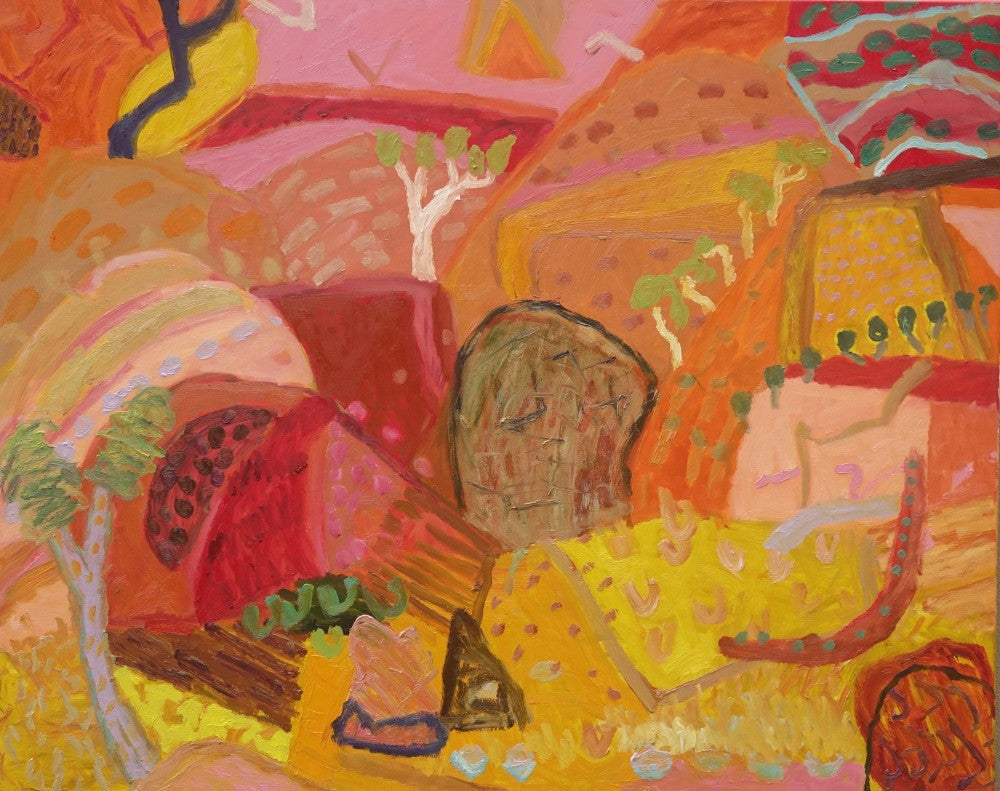Sally Stokes

“The world is a complex place — busy, rushed, always too much happening; but paintings for me bring one to another place — they need time, sitting with; they evoke emotions, questions; they give time for reflections and insights. Joy is fleeting— colour combinations, marks and texture seem to bring the possibility closer to this life force that activates. For me, it seems to be a byproduct of searching through uncertainty.“
Sally Stokes is a Sydney based abstract landscape artist who works from her studio amongst the angophoras in Dural and her boatshed studio in a remote part of the Hawkesbury river. Sally has completed a Bachelor of Fine Arts and a Masters of Analytical Psychology. She studied art at Hornsby TAFE and East Sydney TAFE (The National Art School). She has had seventeen solo shows and numerous group shows.
Sally has been a Finalist in the Sulman prize and the Salon des Refusés and her work has been acquired by many private collectors in Australia and internationally. She is also represented in Public Collections: Newcastle Art Gallery, Artbank, Muswellbrook Regional Arts Centre and Hawkesbury Regional Gallery. In 2021 Sally won the coveted Musswellbrook Art Prize. See More of Sally’s accolades via this Link.
